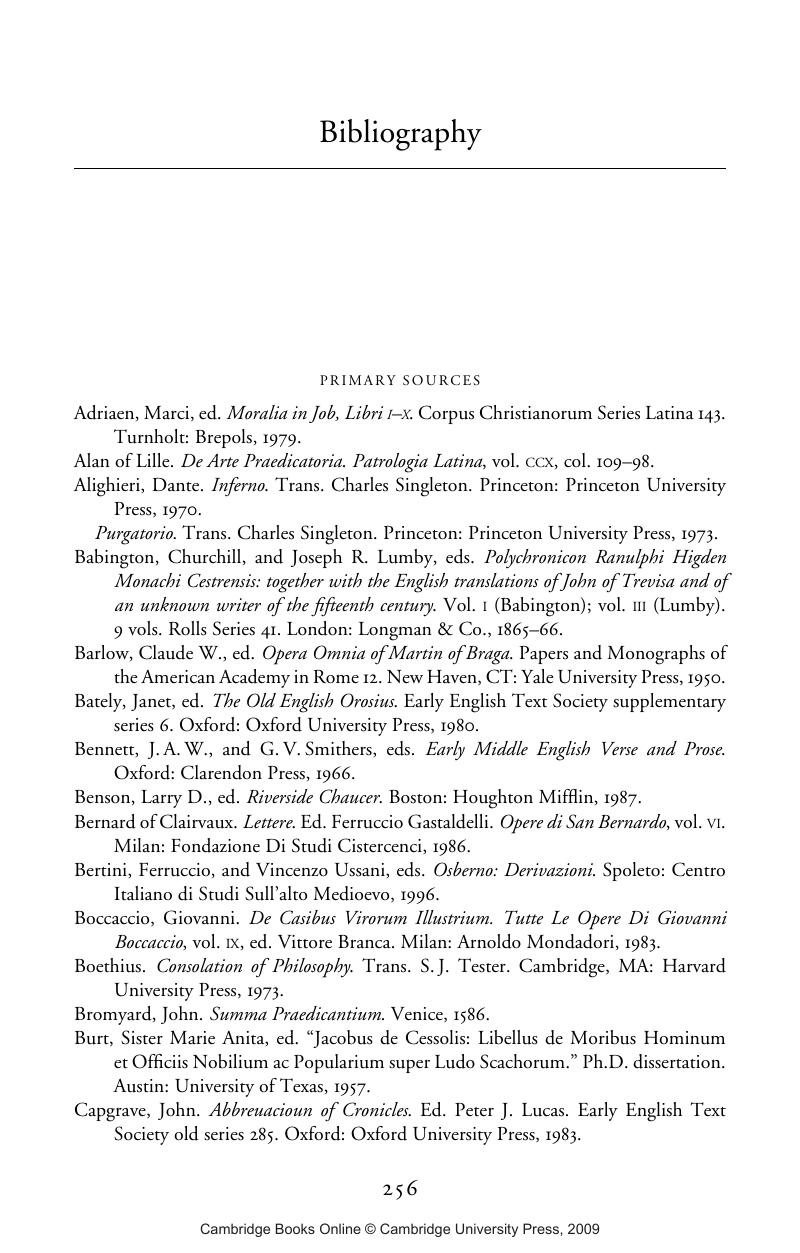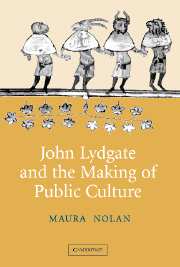Book contents
- Frontmatter
- Contents
- Acknowledgments
- Introduction: the forms of public culture
- 1 Tragic history: Lydgate's Serpent of Division
- 2 Social forms, literary contents: Lydgate's mummings
- 3 Tragedy and comedy: Lydgate's disguisings and public poetry
- 4 Spectacular culture: the Roman triumph
- Bibliography
- Index
- CAMBRIDGE STUDIES IN MEDIEVAL LITERATURE
- References
Bibliography
Published online by Cambridge University Press: 22 September 2009
- Frontmatter
- Contents
- Acknowledgments
- Introduction: the forms of public culture
- 1 Tragic history: Lydgate's Serpent of Division
- 2 Social forms, literary contents: Lydgate's mummings
- 3 Tragedy and comedy: Lydgate's disguisings and public poetry
- 4 Spectacular culture: the Roman triumph
- Bibliography
- Index
- CAMBRIDGE STUDIES IN MEDIEVAL LITERATURE
- References
Summary

- Type
- Chapter
- Information
- John Lydgate and the Making of Public Culture , pp. 256 - 273Publisher: Cambridge University PressPrint publication year: 2005



